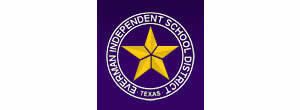Type Public Teachers 350.0 Number of schools 8 Number of students 5,609 | Superintendent Curtis Amos District ID 4818810 Budget 54.4 million USD Staff 728.2 | |
 | ||
Profiles | ||
Everman Independent School District is a public school district based in Everman, Texas (USA). In addition to Everman, the district serves portions of Fort Worth, Forest Hill, and Rendon
Contents
- Map of Everman Independent School District TX USA
- High Schools Grades 9 12
- Junior High Schools Grades 6 8
- Intermediate School Grade 5
- Elementary Schools Grades PK 4
- Academics
- Demographics
- References
Map of Everman Independent School District, TX, USA
In 2011, the school district was rated "academically acceptable" by the Texas Education Agency. The Texas Education Agency's college readiness performance data shows that only 3.9% (8 out of 206 students) of the graduates of the class of 2010 of the Everman school district met TEA's average performance criterion on SAT or ACT college admission tests.
High Schools (Grades 9-12)
Junior High Schools (Grades 6-8)
Intermediate School (Grade 5)
Elementary Schools (Grades PK-4)
Academics
Local region and state-wide averages on standardized tests typically exceed the average scores of students in Everman. In 2015-2016 State of Texas Assessments of Academic Readiness (STAAR) results, 72% of students in Everman ISD met Level II Satisfactory standards, compared with 77% in Region 11 and 75% in the state of Texas. The average SAT score of the class of 2015 was 1217, and the average ACT score was 17.8.
Demographics
In the 2015-2016 school year, the school district had a total of 5,609 students, ranging from early childhood education and pre-kindergarten through grade 12. The class of 2015 included 313 graduates; the annual drop-out rate across grades 9-12 was 1.2%.
As of the 2015-2016 school year, the ethnic distribution of the school district was 55.9% Hispanic, 37.5% African American, 4.2% White, 0.5% Asian, 0.2% American Indian, 0.1% Pacific Islander, and 1.6% from two or more races. Economically disadvantaged students made up 89.3% of the student body.
